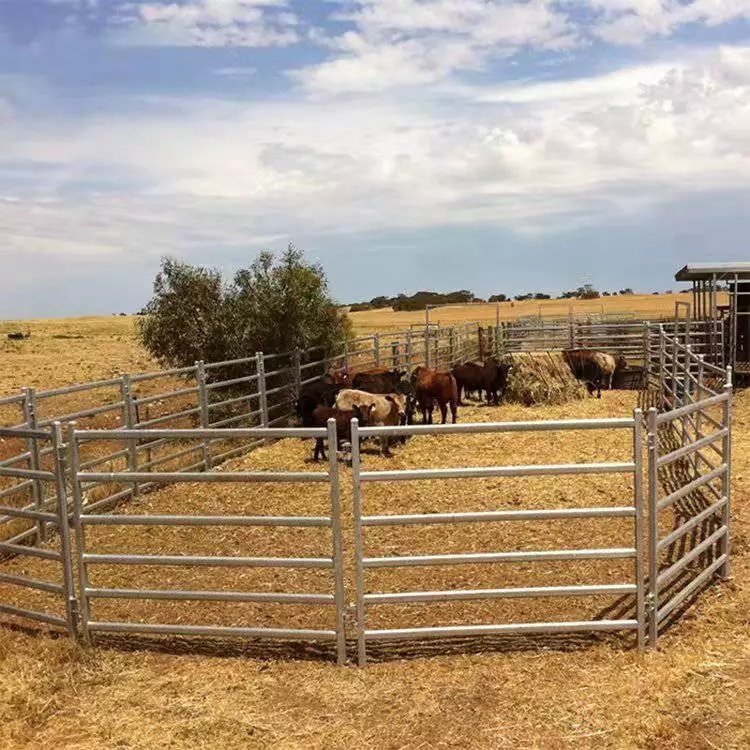The Ultimate Guide to Loading and Transporting Cattle Panels: Tips, Tricks, and Safety Measures
Are you a farmer or rancher looking to efficiently transport cattle panels? Whether you’re moving them for a new fencing project or relocating your livestock, proper loading and transportation of cattle panels is crucial. This comprehensive guide will walk you through everything you need to know about safely handling these essential farm tools.
Why This Article Matters
Cattle panels are indispensable on any farm or ranch, but their size and weight can make them challenging to move. Improper handling can lead to damage, injury, or inefficient use of your time and resources. By mastering the art of loading and transporting cattle panels, you’ll save time, reduce risks, and ensure your fencing projects go smoothly.
What You’ll Learn
In this article, we’ll cover:
- The best methods for loading cattle panels onto various vehicles
- Safety precautions to take when handling and transporting panels
- Tips for securing panels during transit
- Creative solutions for moving panels in different situations
- Maintenance and care tips to extend the life of your cattle panels
Let’s dive in and become experts in cattle panel transportation!
What Are Cattle Panels and Why Are They Important?
Before we get into the nitty-gritty of transportation, let’s quickly review what cattle panels are and why they’re so crucial for farmers and ranchers.Cattle panels, also known as livestock panels or cattle fence panels, are versatile fencing solutions made of welded wire. They typically measure 16 feet long and come in various heights, usually ranging from 4 to 6 feet. These panels are essential for:
- Creating temporary or permanent enclosures for livestock
- Dividing pastures
- Building quick shelters or windbreaks
- Constructing loading chutes and corrals
Their popularity stems from their durability, flexibility, and ease of use. However, these same qualities can make them challenging to transport. Let’s explore how to overcome these challenges.
How to Load Cattle Panels onto Different Vehicles
The method you’ll use to load cattle panels depends on the type of vehicle you have available. Let’s break down the best approaches for various vehicles:
Loading Cattle Panels onto a Pickup Truck
- Prepare your truck: Lower the tailgate and ensure the bed is clear of any debris.
- Position the panel: Stand the panel on its end near the tailgate, with a helper supporting the other end.
- Lift and slide: Carefully lift the panel and slide it into the truck bed, allowing it to bend slightly if necessary.
- Secure the load: Use ratchet straps or bungee cords to tie down the panels, ensuring they won’t shift during transport.
Pro Tip: If you’re hauling multiple panels, consider using a cattle panel carrier that attaches to your truck’s hitch for easier loading and unloading.
Loading Cattle Panels onto a Flatbed Trailer
- Prepare the trailer: Ensure the trailer is clean and free of obstacles.
- Use a ramp: If available, use a loading ramp to make sliding the panels onto the trailer easier.
- Stack carefully: If transporting multiple panels, stack them neatly and secure each layer with straps.
- Check weight distribution: Ensure the load is evenly distributed across the trailer for safe hauling.
Loading Cattle Panels onto a Utility Vehicle (UTV)
- Fold the panel: If possible, fold the panel in half to make it more manageable.
- Use the cargo bed: Place the folded panel in the UTV’s cargo bed, securing it with tie-downs.
- Consider a rack: For frequent transport, invest in a custom rack for your UTV designed to carry cattle panels.
Safety First: Precautions When Handling Cattle Panels
Safety should always be your top priority when working with cattle panels. Here are some essential precautions to keep in mind:
- Wear protective gear: Always wear gloves and sturdy boots to protect your hands and feet.
- Use proper lifting techniques: Bend at the knees and lift with your legs to avoid back strain.
- Work with a partner: Cattle panels are heavy and unwieldy – don’t try to move them alone.
- Be aware of pinch points: Keep your fingers clear of joints and connections to avoid injuries.
- Check for sharp edges: Inspect panels for any protruding wires that could cause cuts or scratches.
Securing Cattle Panels for Transport: Tips and Tricks
Properly securing your cattle panels is crucial for safe transportation. Here are some tips to ensure your load stays put:
- Use quality tie-downs: Invest in strong ratchet straps or heavy-duty bungee cords.
- Create tension: Ensure straps are tight and panels are snug against the vehicle or each other.
- Use corner protectors: Place cardboard or foam at pressure points to prevent damage to the panels.
- Double-check connections: Before departing, give everything a final inspection and tug to ensure security.
Creative Solutions for Moving Cattle Panels
Sometimes, you might need to think outside the box when transporting cattle panels. Here are some creative ideas:
- Rolling method: For short distances on flat ground, you can “roll” a panel by walking it end over end.
- Tractor bucket: If you have access to a tractor with a front-end loader, you can use the bucket to transport panels around your property.
- Makeshift dolly: Create a simple dolly using two wheels and an axle to move panels more easily by hand.
Maintaining Your Cattle Panels During Transport and Beyond
To extend the life of your cattle panels and ensure they’re always ready for use, follow these maintenance tips:
- Clean panels regularly: Remove dirt and debris, especially after transport.
- Inspect for damage: Check for bent wires or broken welds before and after each use.
- Store properly: Keep panels off the ground when not in use to prevent rust and damage.
- Apply protective coatings: Consider using rust-inhibiting sprays on any exposed metal.
Frequently Asked Questions About Transporting Cattle Panels
Q: How many cattle panels can I safely transport in my pickup truck? A: This depends on your truck’s capacity, but generally, 8-10 panels can be safely transported in a standard pickup bed.Q: Do I need a special license to transport cattle panels? A: For personal use, no special license is required. However, if you’re transporting commercially, check your local regulations.Q: Can I transport cattle panels on top of my car? A: It’s not recommended due to safety concerns. Stick to trucks, trailers, or UTVs for safe transport.
Conclusion: Mastering Cattle Panel Transportation
Transporting cattle panels doesn’t have to be a daunting task. By following the tips and techniques outlined in this guide, you’ll be able to move your panels safely and efficiently, saving time and reducing the risk of injury or damage. Remember to always prioritize safety, use the right equipment, and don’t be afraid to get creative when necessary.Whether you’re setting up a new pasture, building a temporary corral, or just reorganizing your farm, proper cattle panel transportation is a skill that will serve you well for years to come. Happy hauling!
Key Takeaways:
- Always prioritize safety when handling and transporting cattle panels
- Choose the right vehicle and loading method for your specific needs
- Secure panels properly using quality tie-downs and tension
- Maintain your panels to extend their lifespan and ensure they’re always ready for use
- Don’t be afraid to get creative with transportation solutions, but always put safety first
By mastering these techniques, you’ll be well-equipped to handle all your cattle panel transportation needs efficiently and safely. For more information on cattle equipment and fencing solutions, be sure to check out our other resources and products.





